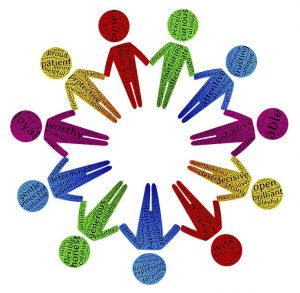 Each day we surround ourselves with noise from podcasts and social media alerts to incessant Zoom meetings with colleagues, to radio and TV. Our world has conditioned people to crave noise. When we aren’t listening to input, our minds are just as noisy with thoughts that are swirling about often hopping from one topic to the next as we convince ourselves that this is what is necessary to gain as much information as possible in the shortest amount of time.
Each day we surround ourselves with noise from podcasts and social media alerts to incessant Zoom meetings with colleagues, to radio and TV. Our world has conditioned people to crave noise. When we aren’t listening to input, our minds are just as noisy with thoughts that are swirling about often hopping from one topic to the next as we convince ourselves that this is what is necessary to gain as much information as possible in the shortest amount of time.
How often do we stop to think that the most insightful learning sometimes comes from listening to the silence? We have been conditioned to be silence avoidant. If someone is not speaking for too long, we have a general feeling of malaise where we will jump in to fill the void. Sometimes, however, the silence truly does speak louder than the words. And sometimes, the words that follow a long silence are more sincere than those that tumble out of our mouths so effortlessly.
According to experts who spoke to the sound insulation company, Acoustical Surfaces, the fear of silence, or “sedatephobia,” is becoming more and more common, causing people to feel uneasy in quiet places or situations (think the library and awkward pauses in conversation). Interestingly enough, leading hypnotherapist, Dominic Knight, said the phobia has only surfaced within the last 50 years or so, which could suggest we live in a “much noisier world” than, say, the environment our parents and grandparents grew up in.
There’s no one root cause of a fear of silence, according to doctor of psychology and licensed clinical social worker, Dr. Danielle Forshee, LLC. However, she tells Elite Daily, “silence generally stimulates us to be able to notice our automatic thoughts,” aka uncontrollable, and often-uncomfortable thoughts that occur when triggered by something else. Because these thoughts often cause stressful emotions to ensue, she says, “most prefer to not sit and notice their thoughts, and sound provides that relief.”
Imagine the infamous employee reference check. You ask the prior manager if they would rehire the applicant and there is a pause that you did not expect. You have two choices: 1) gloss over it and repeat the question or move on to something else or I have even seen recruiters answer their own question just so that the silence does not hang in the air like an early morning fog or 2) allow the pause to hang in the air and then listen very closely to what the person has to say after that pause. There is a reason it happened.
Being comfortable with another’s silence requires that we become comfortable with our own silence first. Practicing mindfulness can be one way to become more comfortable. Engaging in a daily meditation practice, whether it be for a quick five minutes in the morning or a lengthier hour in the evening, does incredible things for the human mind, such as relieving built up anxiety, quieting mental chatter, improving focus, and increasing self-esteem and feelings of confidence.
So the next time you find yourself avoiding the silence, take time to explore what is triggering your need for constant noise distraction. Appreciate the learnings that can come from silence.




